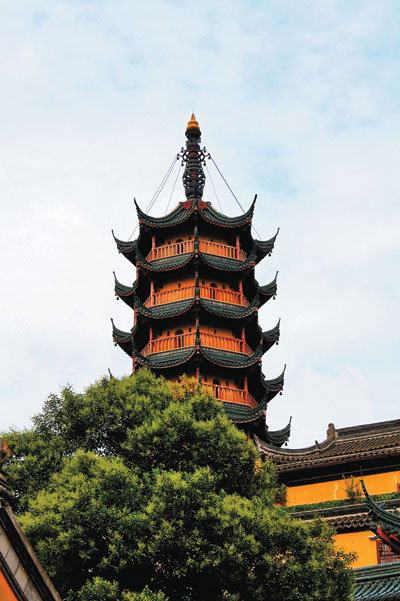
James Baquet AFTER my visit to Linggu Temple in Nanjing, I took a train to Zhenjiang where I visited Jinshan Temple (also called Jiangtian Temple). The temple is impressive, virtually blanketing the small hill on which it is located with its halls, courtyards and pavilions. “Jinshan” means “Gold Mountain.” The Tang Dynasty monk Fahai discovered gold on the small riverside mountain where the temple is located; when he arrived, the temple had fallen into ruin, and Fahai used the gold he found in a cave to restore it. By all accounts, he was a virtuous monk. But Chinese people know him better from “The Legend of the White Snake.” Originally it was a horror story in which a demon in the form of a white snake became human and enthralled a young scholar. In that version, Fahai saved the young scholar from the snake. But as time passed, the story became a love story, and Fahai became the “evil monk” who separated the lovers because their relationship broke the rule that humans and supernaturals could not be together. Many Chinese know Jinshan Temple because of its connection to Fahai. While the temple dates back to the Eastern Jin Dynasty (317-420), its second common name was given by Emperor Kangxi (reigned 1661-1722) of the Qing Dynasty. During a visit, the emperor wrote the characters “jiang tian chan si,” or “The Zen Temple between the River and the Sky” in fine calligraphy. If you happen to be in Zhenjiang, spend a half-day climbing the steps at this beautiful temple. Arrive early, though: I got there at 3 p.m., and was being shooed out by 4! | 
